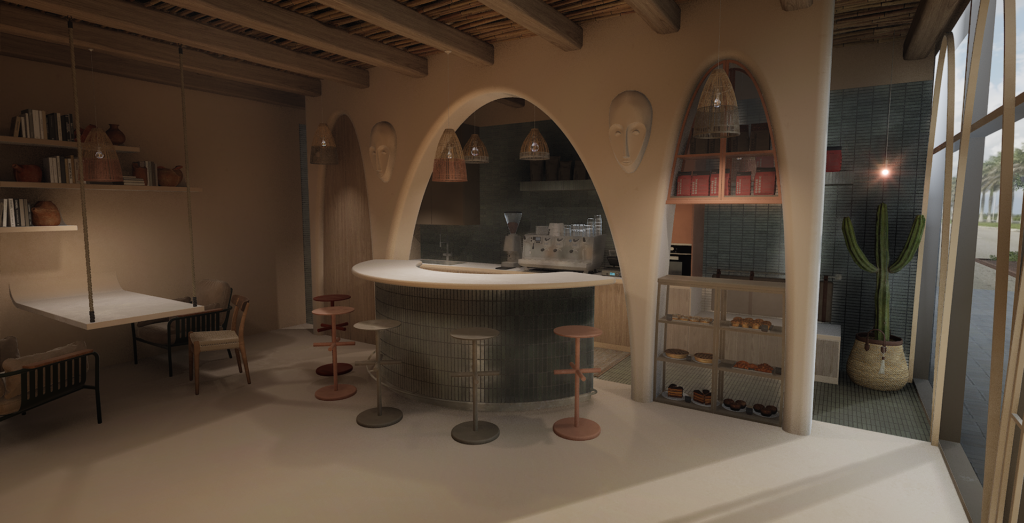In the world of computer graphics, real-time rendering has revolutionized various industries, especially in sectors like gaming, architecture, virtual reality (VR), and film production. But how does real-time rendering differ from traditional 3D rendering, and why has it become so significant in the execution phase of projects? This blog will explore these questions, offering insights into the role of real-time rendering and how it contrasts with 3D rendering.
What is Real-Time Rendering?
Real-time rendering refers to the process of generating images instantly in response to user input, enabling interactive visuals that update in real-time. This technology allows for smooth, dynamic graphics that are particularly useful in applications like video games, VR, and live simulations where responsiveness is key. Real-time rendering works within strict time constraints—often aiming for 30 to 60 frames per second (FPS) or more—ensuring a seamless experience for users.
This capability is powered by advancements in Graphics Processing Units (GPUs) and specialized rendering engines like Unreal Engine and Unity, which are designed to handle the complex tasks of processing textures, lighting, shading, and reflections on the fly.
The Impact of Real-Time Rendering on the Execution Stage
In various industries, the execution stage is critical—it’s the phase where design concepts turn into reality. Real-time rendering provides several distinct advantages during this phase:
1. Instant Feedback and Iteration
One of the most significant benefits of real-time rendering is the ability to instantly see the results of design changes. Whether you’re adjusting lighting, material properties, or textures, the immediate visual feedback allows designers and developers to make quick adjustments without waiting for long rendering times. This is crucial in the execution stage of a project, where delays can be costly, and precision is key.
2. Enhanced Collaboration
Real-time rendering facilitates better collaboration between teams by enabling live demonstrations and walk-throughs. Architects, clients, and other stakeholders can view a project in real time, exploring different design options interactively. This instant collaboration minimizes miscommunication and helps projects stay on track during execution.
3. Cost and Time Efficiency
Traditional rendering methods can take hours or even days to generate complex scenes. In contrast, real-time rendering significantly reduces the time required to visualize changes, cutting down production costs and improving overall efficiency. This is particularly beneficial in industries like architecture, where time-sensitive decisions can greatly impact project costs.
4. Immersive Experiences
In sectors like gaming and VR, real-time rendering is fundamental to creating immersive experiences. In these applications, the virtual world must react instantaneously to user actions, making the execution of real-time rendering essential for maintaining user engagement and immersion.
Difference Between Real-Time Rendering and 3D Rendering
While both real-time and traditional 3D rendering aim to create high-quality visual representations, they differ significantly in their processes, use cases, and execution.
1. Speed vs. Quality
- Real-Time Rendering: Prioritizes speed and responsiveness, focusing on generating images at a high frame rate (30–60 FPS) to support interactivity. This can sometimes come at the cost of visual fidelity, as certain shortcuts (like lower resolution textures or simplified lighting models) are used to ensure performance.
- Traditional 3D Rendering: Focuses on delivering the highest possible quality by meticulously calculating lighting, shadows, reflections, and textures. However, this comes at the cost of time. A single frame may take minutes, hours, or even longer to render depending on the complexity of the scene.
2. Application
- Real-Time Rendering: Primarily used in interactive environments like video games, virtual reality, simulations, and live visualizations. It’s also making its way into architectural design and automotive industries, where quick iteration and feedback loops are necessary.
- 3D Rendering: Often used for offline purposes, such as creating high-quality animations, films, architectural visualization for promotional materials, and photorealistic imagery for product designs. It’s not bound by the real-time constraints and therefore can focus more on perfection in detail and realism.
3. Hardware Requirements
- Real-Time Rendering: Relies heavily on powerful GPUs designed to handle parallel processing, which is essential for managing the calculations required to produce images quickly.
- 3D Rendering: Can be performed on a range of hardware setups, including multi-core CPUs, but often requires specialized rendering farms for large-scale projects due to the extensive computation time involved.
4. Flexibility
- Real-Time Rendering: While less graphically intensive than traditional rendering, real-time rendering is highly flexible. It allows for interactive changes and real-time scene manipulation, which is invaluable during the execution phase of a project.
- 3D Rendering: More rigid in nature, as the rendering process is predetermined. Making changes to a scene requires re-rendering the entire project, which can slow down the workflow.
Conclusion
Real-time rendering has become an essential tool in modern digital workflows, offering a balance between speed and interactivity that traditional 3D rendering cannot match. By providing instantaneous feedback, fostering collaboration, and reducing time and costs during the execution stage, real-time rendering empowers industries like gaming, architecture, and film to deliver high-quality experiences faster and more efficiently.
As real-time rendering technology continues to evolve, the line between it and traditional 3D rendering is beginning to blur, with advancements like real-time ray tracing bringing unprecedented levels of realism to real-time applications. Whether in the creative process or final execution, real-time rendering is shaping the future of interactive visual content.




